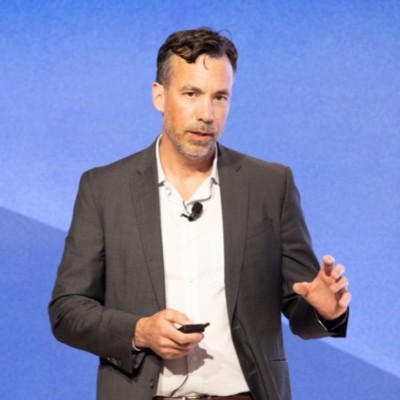- Video Library
- John Engels, Corvivo Cardiovascular - Regenerative Medtech Company | LSI USA ‘24
John Engels, Corvivo Cardiovascular - Regenerative Medtech Company | LSI USA ‘24

John Engels
John Engels is a founder, investor and operator focused on new technology development and commercialization. In addition to Corvivo, John is the co-Founder of Andante Biologics, developing novel biologic therapies to overcome chronic stress and age-related diseases and disorders. John co-founded AxoGen (NASDAQ:AXGN, Russell 2000), a leading medical technology company dedicated to peripheral nerve regeneration. At AxoGen from 2002 to 2017, he helped lead the company through launch, product creation, fundraising, strong revenue growth of five of its flagship products, listing on NASDAQ and international expansion. John started his career at CACM, a boutique investment banking firm that pioneered innovative energy and emissions trading markets. John has recently been Board member, investor in, or advisor to: MMI, a private robotic microsurgery company bringing super dexterity to surgery; HCW Biologics (NASDAQ:HCWB), developing novel therapeutics for inflammation and age-related disorders; BioFlorida, the voice of Florida’s life sciences industry; UF Innovate, supporting innovation at the University of Florida; and ECM Therapeutics. He holds a MBA from the Wharton School of Business, and a BA from the University of Chicago.
John Engels
John Engels is a founder, investor and operator focused on new technology development and commercialization. In addition to Corvivo, John is the co-Founder of Andante Biologics, developing novel biologic therapies to overcome chronic stress and age-related diseases and disorders. John co-founded AxoGen (NASDAQ:AXGN, Russell 2000), a leading medical technology company dedicated to peripheral nerve regeneration. At AxoGen from 2002 to 2017, he helped lead the company through launch, product creation, fundraising, strong revenue growth of five of its flagship products, listing on NASDAQ and international expansion. John started his career at CACM, a boutique investment banking firm that pioneered innovative energy and emissions trading markets. John has recently been Board member, investor in, or advisor to: MMI, a private robotic microsurgery company bringing super dexterity to surgery; HCW Biologics (NASDAQ:HCWB), developing novel therapeutics for inflammation and age-related disorders; BioFlorida, the voice of Florida’s life sciences industry; UF Innovate, supporting innovation at the University of Florida; and ECM Therapeutics. He holds a MBA from the Wharton School of Business, and a BA from the University of Chicago.

17011 Beach Blvd, Suite 500 Huntington Beach, CA 92647
714-847-3540© 2025 Life Science Intelligence, Inc., All Rights Reserved. | Privacy Policy







